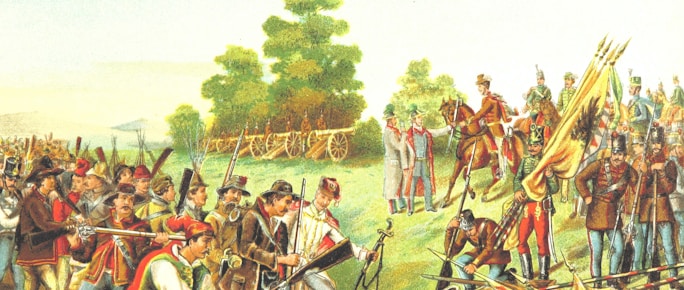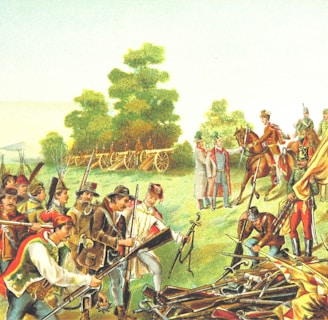The Art of Subtlety: Crafting Nuanced Characters in Historical Realism
Bibliotheca Exotica
4 min read


When it comes to historical realism in writing, one of the key elements that can truly elevate a story is the art of subtlety. Crafting nuanced characters who feel authentic and true to their time period requires a delicate balance of research, imagination, and skill. In this blog post, we will dive deep into the writer's art of subtlety and explore how they can masterfully bring these characters to life.
The Importance of Historical Accuracy
Before we delve into the art of subtlety, it's crucial to understand the importance of historical accuracy. When writing historical fiction or any story set in a specific time period, readers expect a certain level of authenticity. They want to be transported back in time and experience the world through the eyes of the characters. This requires meticulous research to ensure that the setting, events, and societal norms are accurately portrayed.
However, historical accuracy alone is not enough to create compelling characters. While it's essential to get the facts right, it's equally important to infuse these characters with depth, complexity, and nuance. This is where the art of subtlety comes into play.
Understanding the Time Period
Before a writer can craft nuanced characters in historical realism, they must first have a deep understanding of the time period in which their story is set. This goes beyond surface-level knowledge of historical events and requires a comprehensive understanding of the culture, beliefs, and societal norms of the era.
By immersing themselves in the history of the time period, writers can gain valuable insights into the mindset of their characters. This allows them to create nuanced individuals who think, speak, and act in ways that are consistent with the time period, while also making them relatable to modern readers.
Research, Research, Research
Research is the foundation upon which the art of subtlety is built. To craft nuanced characters, writers must dig deep into the historical record, examining primary sources, diaries, letters, and other documents from the time period. This research not only helps to ensure accuracy, but it also provides inspiration for creating authentic and believable characters.
When conducting research, it's important to look beyond the major historical figures and events. Pay attention to the everyday lives of people during the time period. What were their hopes, dreams, and fears? What were their daily routines and rituals? By understanding these details, writers can add depth and richness to their characters, making them come alive on the page.
Subtlety in Characterization
Now that we have a solid foundation of historical accuracy and research, let's explore how subtlety can be used to craft nuanced characters in historical realism.
One way to achieve subtlety in characterization is through the use of subtext. Instead of explicitly stating a character's thoughts and feelings, writers can hint at them through their actions, dialogue, and interactions with other characters. This allows readers to draw their own conclusions and creates a sense of depth and complexity.
For example, let's say our protagonist is a young woman living in Victorian England. Instead of explicitly stating that she feels trapped by societal expectations, the writer could show her longing glances out the window, her hesitance to conform to social norms, and her secret rebellions in small acts of defiance. These subtle cues allow readers to understand the character's inner struggles without spelling it out for them.
Another way to add subtlety to characterization is through the use of conflicting emotions and motivations. Just like real people, characters in historical realism should not be one-dimensional. They should have internal conflicts, desires, and motivations that may not always align with societal expectations.
For instance, a soldier fighting in World War II may have a deep sense of duty and patriotism, but also harbor doubts and fears. By exploring these conflicting emotions, the writer can create a more nuanced and realistic portrayal of the character, making them relatable and human.
Dialogue and Language
In historical realism, dialogue and language play a crucial role in creating authentic and nuanced characters. The way characters speak can reveal a lot about their background, education, and social status.
When crafting dialogue, it's important to strike a balance between historical accuracy and readability. While it's tempting to fill the dialogue with archaic language and slang, this can alienate modern readers. Instead, use subtle linguistic cues to indicate the time period, such as sentence structure, vocabulary, and idioms.
Additionally, pay attention to the way characters address each other. In different time periods and cultures, there were specific rules and conventions for addressing people of different social classes or genders. Incorporating these details into the dialogue can add authenticity and depth to the characters.
Avoiding Stereotypes
When crafting nuanced characters in historical realism, it's important to avoid falling into the trap of stereotypes. While historical accuracy is crucial, it's equally important to challenge and subvert stereotypes that may perpetuate harmful narratives.
Instead of relying on tired tropes and clichés, take the time to explore the complexities and contradictions of your characters. They should not be defined solely by their time period or societal roles, but rather by their unique personalities, experiences, and aspirations.
By avoiding stereotypes and embracing subtlety, writers can create characters who feel authentic and relatable, while also challenging readers' preconceived notions about the past.
Conclusion
The art of subtlety is a powerful tool in the writer's arsenal when crafting nuanced characters in historical realism. By immersing themselves in the time period, conducting thorough research, and employing subtlety in characterization, writers can create individuals who feel authentic, relatable, and true to their era.
So, the next time you embark on a journey into historical realism, remember to embrace the art of subtlety and let your characters shine with depth, complexity, and authenticity.

